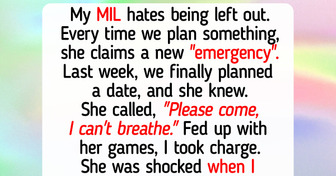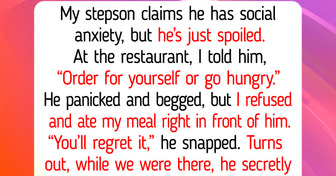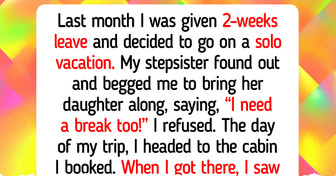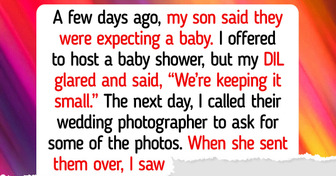12 Timeless Nail Designs That Don’t Go Out of Style
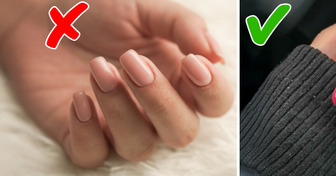
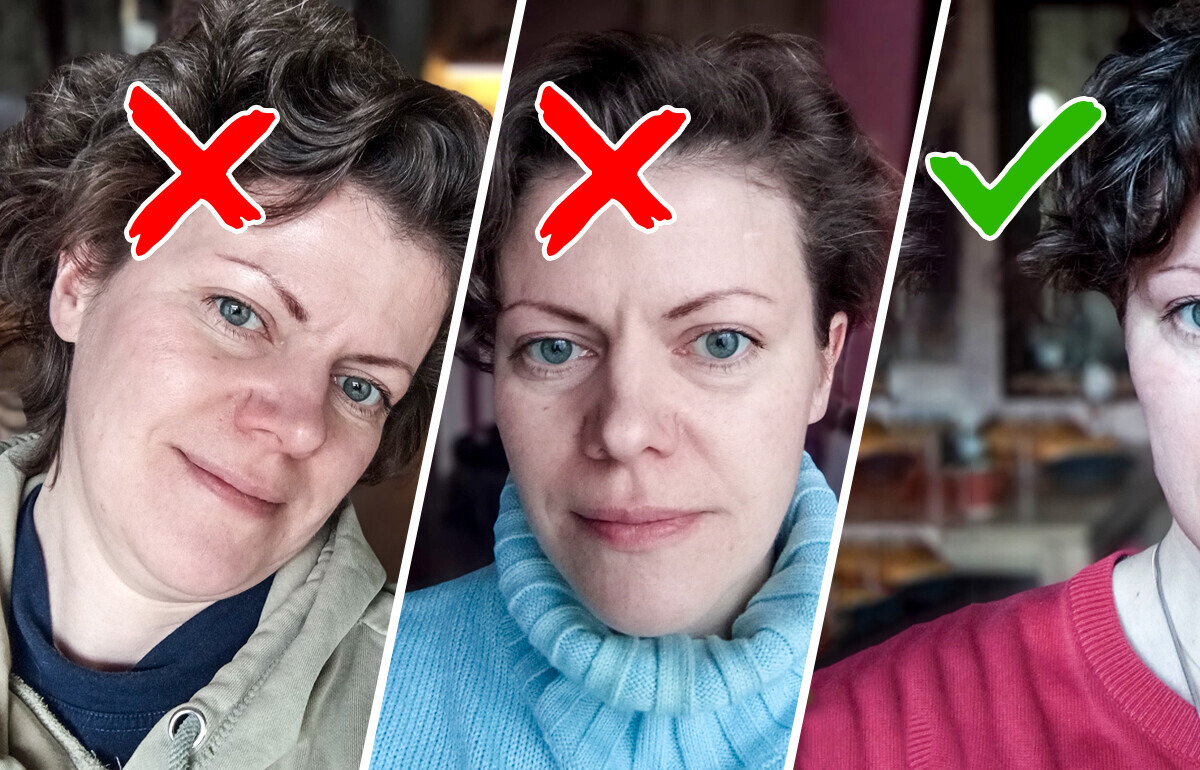
I’m not much of a selfie taker, but my parents live in another city, we don’t see each other very often, so they often ask me to send them my fresh photos. Any bad photo, understandably, causes genuine worries among the relatives. That’s why I decided to find out how to take selfies in such a way that you won’t be afraid to post them online or send them to your family.
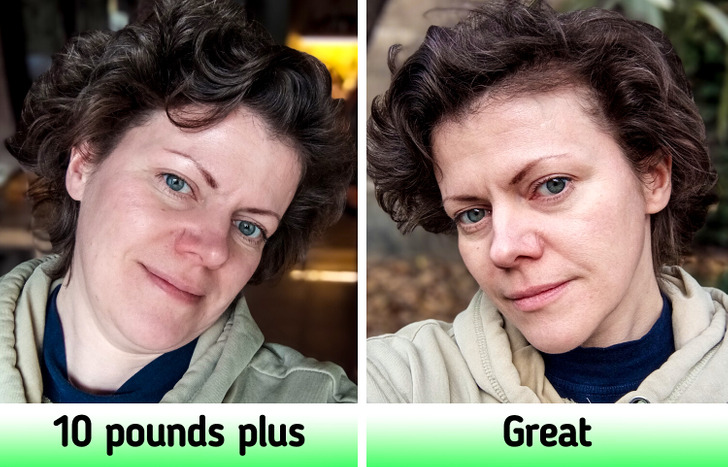
Many gurus of selfies advise to slightly lower the chin so that it doesn’t stand out so much and the eyes look bigger. However, I immediately get folds on my neck, a second chin appears, and my face looks puffy.
Although I want to move my face away from the phone when taking pictures, it’s better to stretch the neck, slightly lower the chin and turn it to the side. And if you take the picture on the inhale rather than on the exhale, it’s easier to adopt this pose. Plus, the body tenses up a bit at this moment and looks tighter.
It’s worth noting that it wasn’t easy for me to adopt this pose at first. I always felt like I was pulling my head out of its shell like a turtle.
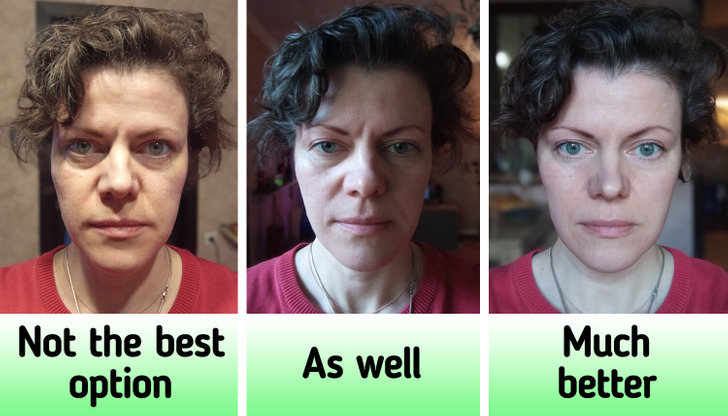
The right light plays an important role when taking selfies. Ideally, you should find a natural light source to give you a more natural-looking complexion. Light from lamps can give your skin an unpleasant yellowish color.
Any window in the house, if it gets sunlight, will do just fine. The main thing is to position yourself directly opposite it, not sideways, otherwise sharp shadows will appear on your face.
If the shooting takes place in the evening, it’s better to choose a light source located at the level of the face. Lighting from the ceiling chandelier, unfortunately, ruthlessly emphasizes any possible skin imperfections. So, taking a photo with the wrong light will result in a poor selfie, but natural light will make it perfect.
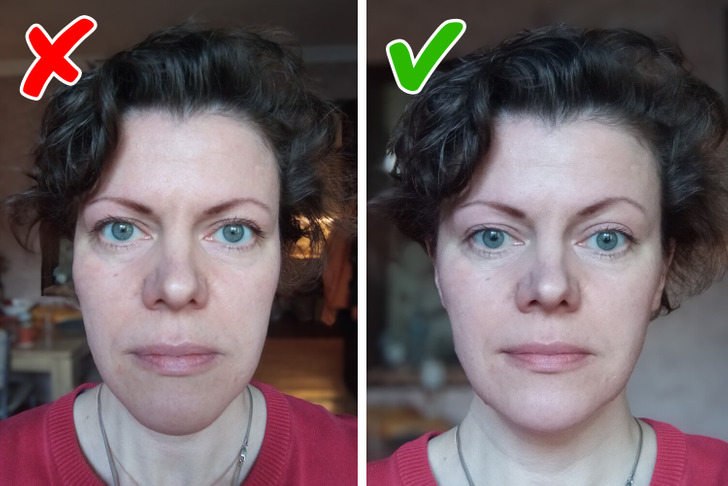
The closer you bring the camera of your phone to your face, the more distorted the proportions become. The cheeks, chin and nose immediately appear larger, and the neck seems to disappear. If you don’t have a selfie stick or tripod at hand (like me), it’s better to hold the phone in your outstretched hands. If you want only your face in the frame, you can always crop the shot later.
Owners of large and heavy phones can fix the device on a bookshelf (some even stick the mobile phone to vertical surfaces with special tape), and then just press the button. This way, you can try to take a picture at a slower shutter speed as well. But my phone is small, and I have not tested these tricks in practice.
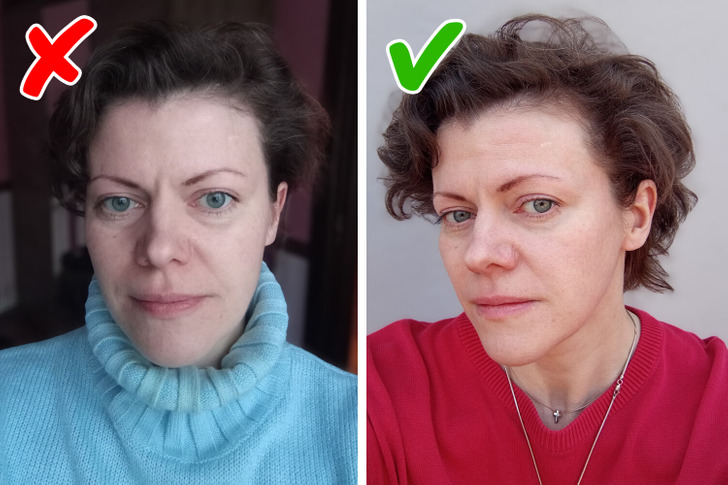
Ideally, there should be one main character in the frame to be in focus. It is understandable that sometimes you want to take a selfie against an interesting background, but in this case, the picture may not turn out too well.
Most mobile phones have a “portrait mode” that automatically blurs the background. However, if brightly colored objects remain in the frame, even in blurred form, they will involuntarily attract the eye. As a result, instead of a well-thought-out composition, you may end up with a real chaos.
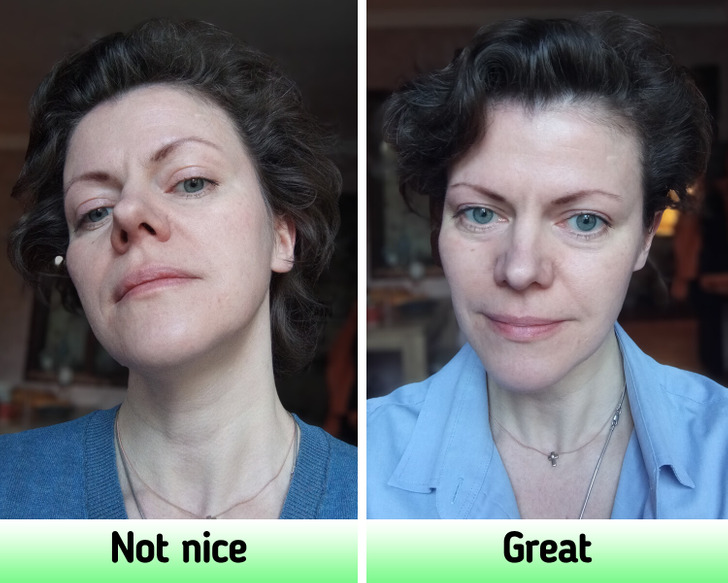
Any camera inadvertently magnifies the object closest to it. To make our neck look longer, we sometimes jut our chin forward, which makes it look gigantic and makes our eyes look tiny.
Also, although I love my neck, I’m not too keen on showing my nostrils like a prancing horse.
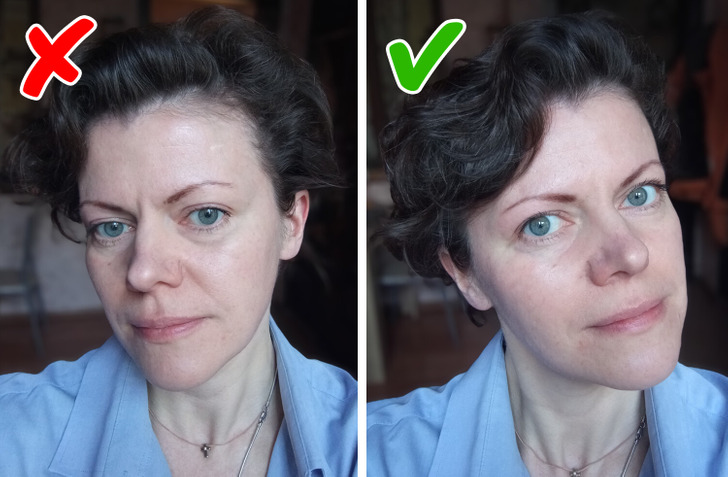
When we take selfies, it seems better to look at the screen so that we can spot any mistakes and choose the best possible pose. As a result, the gaze in the photo is a bit unfocused, as if the person is looking into the vast distance.
That’s why some experts recommend directing your gaze straight into the camera. However, I always forget about this nuance and stare at the screen, and then I make excuses for myself by saying that I just wanted to make a dreamy gaze.
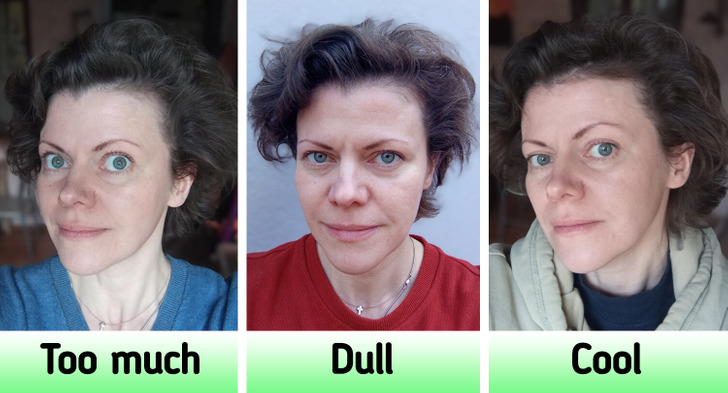
My grandmother always said that men admired her big blue eyes. To prevent gentlemen from accidentally overlooking this most prominent feature, my grandmother used to desperately raise her eyebrows in her old age, which made her appear perpetually amazed rather than seductive.
Although raised eyebrows do make your eyes look visually larger and your expression more lively, it’s best not to overdo it. Otherwise, treacherous creases will appear on the forehead, and the photo will turn out to be somewhat exalted. Ideally, you should only raise your eyebrows slightly, using all the muscles in your face.

I think there is nothing wrong about using filters — some people know how to use them masterfully. But my own face, processed with simple programs on my phone, frankly scares me.
Before taking a selfie, I chose 2 filters: one to remove wrinkles, the other to make my face look thinner. The result was uninspiring: my face looked rubbery and cartoonish, as if it had been drawn by artificial intelligence. I’d rather keep my wrinkles.
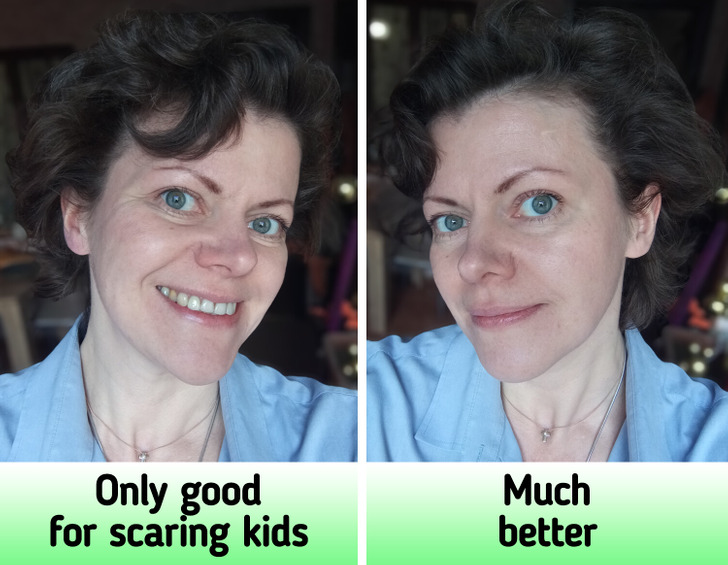
I am truly envious of people who can smile, showing their teeth gracefully. I, on the other hand, have an evil grin that resembles the grimaces of clowns from horror movies.
Any face does look more attractive with a smile, but it is important that it should be natural. If a wide smile is difficult to achieve, you can simply lift the corners of your lips and squint your eyes slightly.
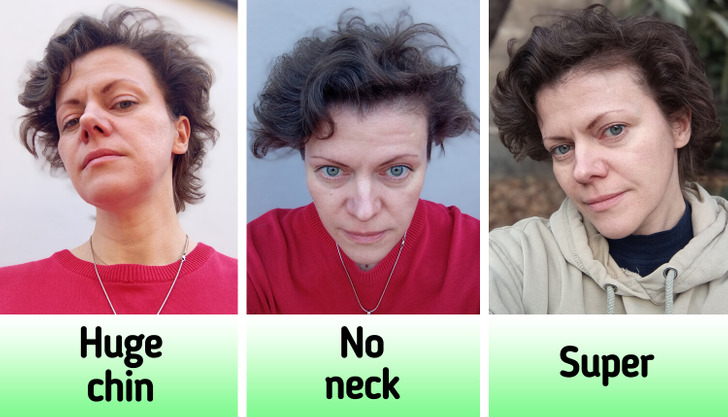
When taking a selfie, photographers recommend holding the camera just above eye level, although you can always experiment with different angles. I, for example, definitely don’t like the lower one, so I always try to raise the phone higher so that my eyes look bigger, my cheeks look smaller, and my shoulders look narrower.
But with the angles like these, the neck disappears completely, and the head seems to grow right out of the shoulders. What works best for me is when the phone is slightly raised.
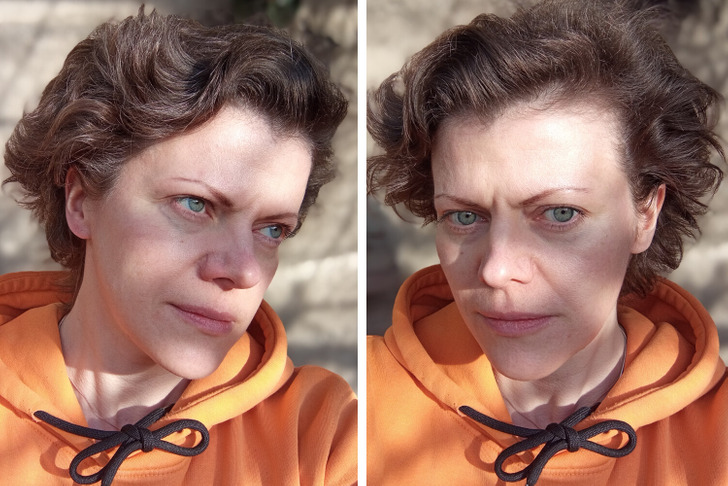
For those who take selfies infrequently and don’t always remember which angles and poses look best, the timer function is great. You can set any number of seconds and then experiment to find the best angle and look at the camera or look away.
This works well in low light too, where the phone needs a slightly longer shutter speed to create a sharp shot. This way, the phone won’t shake in your hand when you press the shutter release button.
And here experts reveal what your selfie can tell about you.

